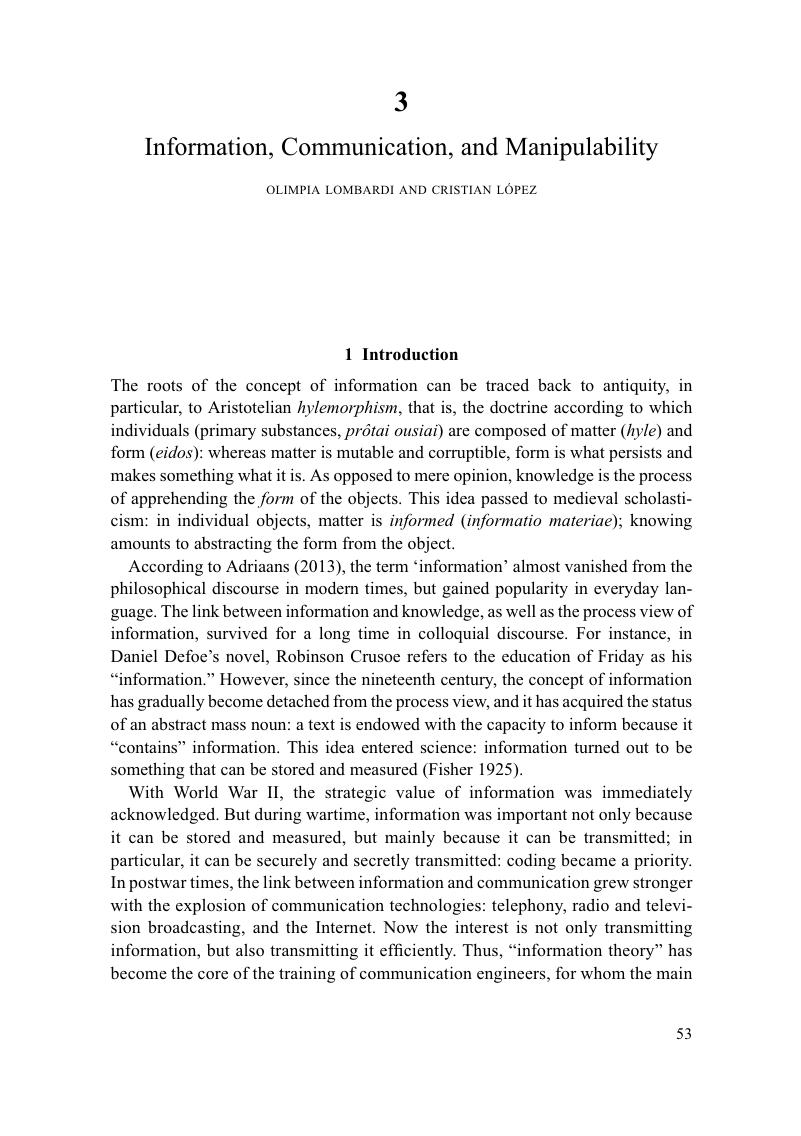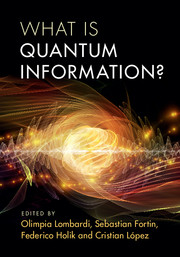Book contents
- What Is Quantum Information?
- What Is Quantum Information?
- Copyright page
- Contents
- Contributors
- Preface
- Introduction
- Part I The Concept of Information
- 1 About the Concept of Information
- 2 Representation, Interpretation, and Theories of Information
- 3 Information, Communication, and Manipulability
- Part II Information and Quantum Mechanics
- Part III Probability, Correlations, and Information
- Index
- References
3 - Information, Communication, and Manipulability
from Part I - The Concept of Information
Published online by Cambridge University Press: 04 July 2017
- What Is Quantum Information?
- What Is Quantum Information?
- Copyright page
- Contents
- Contributors
- Preface
- Introduction
- Part I The Concept of Information
- 1 About the Concept of Information
- 2 Representation, Interpretation, and Theories of Information
- 3 Information, Communication, and Manipulability
- Part II Information and Quantum Mechanics
- Part III Probability, Correlations, and Information
- Index
- References
Summary

- Type
- Chapter
- Information
- What is Quantum Information? , pp. 53 - 76Publisher: Cambridge University PressPrint publication year: 2017

